Generally speaking you will want to replace the spark plug(s) after each 100 hours of use. This assumes of course that your engine is running normally and you are not experiencing problems like a "rough engine" or an engine that fails to catch while the ignition is turning over. If these occur it's time to pull the plug and determine if it is the problem or some other component is the cause.
Actually pulling the plug, inspecting and replacing it only takes 5 to 10 minutes. However, unlike a car you can't pull a handle and pop the hood to get to the spark plug. On an ATV you have to remove plastic (exterior panels) to expose the plug and depending on your brand that could be a lot of plastic. Pulling off parts is the real time consumer for this task.
Because it takes a bit of work to "open up" your ATV it's a good idea to check a couple of items while they are easily accessible. Make certain that the bolts on the battery cables are firmly attached to the battery posts. A common "won't start" problem is often the result of hard riding loosening the bolts from the battery terminals.
Your exhaust system is another component that is accessible in most models when you have sufficient exterior panels removed to get to the spark plug. Check the bolts holding the pipe to the engine to ensure a secure fit.
The steps we provide below are general in nature and are not meant to replace the instructions found in your OEM owner's manual. Obviously different brands have different engine mounting configurations meaning the location of the spark plug and how easy it is to access will vary. When in doubt, follow the OEM instructions. Our tips are intended to show you that this repair can be done as a DIY project saving you professional labor costs and a more enjoyable ATV experience.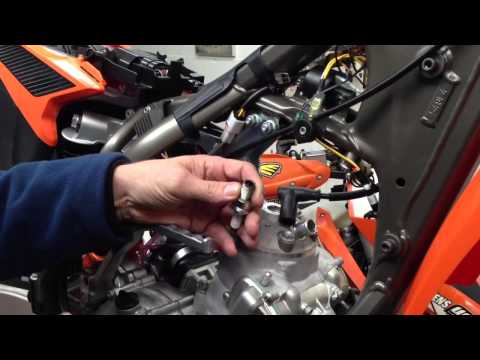
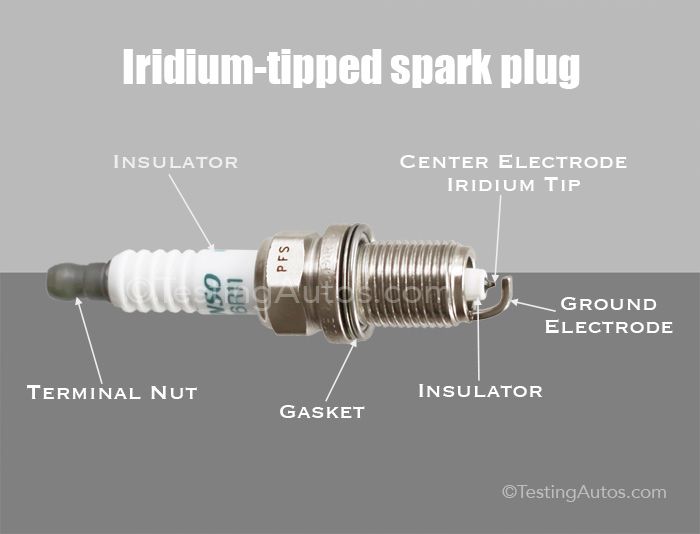 The last thing you need is debris falling into the engine once you have pulled the plug.
The last thing you need is debris falling into the engine once you have pulled the plug. Use the gap gauge to set the gap and then reinstall.
Use the gap gauge to set the gap and then reinstall.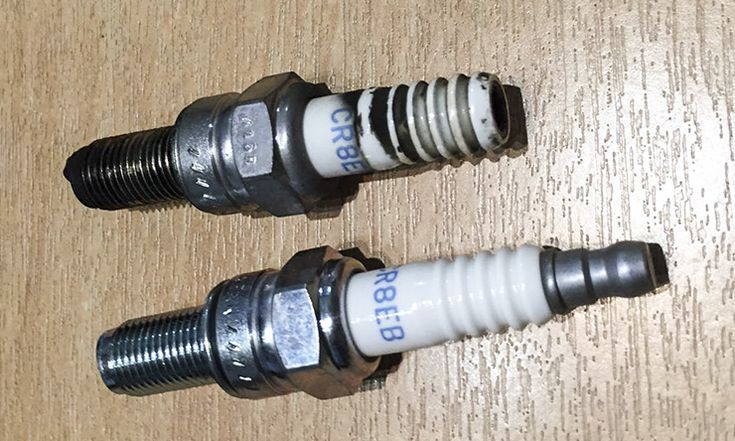 Place the boot over the plug and push down until you hear it snap into position.
Place the boot over the plug and push down until you hear it snap into position.Replacing the spark plug is a simple DIY task that almost anyone can accomplish in a minimal amount of time.
- End of Procedure -
Return to all Repair & Install Guides
I’ve been riding ATVs for quite a while and a question people who haven’t changed their spark plugs before or have a new ATV often need to know is when should you change your ATV spark plugs. I looked at the owner’s manuals for the most popular brands and thought I’d share when you should do it.
On average, every 6 months, 600 miles (1000 km), or 100 hours, whichever comes first according to the owner’s manual of popular ATVs such as Polaris, and Honda. A good rule of thumb is to inspect them every 6 months and change them as necessary.
Certain ATV models such as the Yamaha Kodiak say to check them after the first 1 month, and 3 months. So, there can be some variation depending on the make and model of the ATV. Today, I’ll explain the general procedure for inspecting and changing the spark plugs. As well as, what happens when an ATV spark plug is bad.
Components in ATV engines wear out, and I’ve found routine maintenance every 6 months is about right. But, how long do ATV spark plugs last specifically?
Overall, ATV spark plugs last 6 months or 600 miles (1000 km), whichever comes first. They can last longer or shorter depending on how aggressively an ATV is ridden. If you regularly rev the engine to very high RPMs and put a lot of torque on the ATV it can shorten their life.
The same is also true if you ride your ATV very gently. But, on average every 6 months for most ATVs is about right. A spark plug is a mechanical component that has parts made of metal.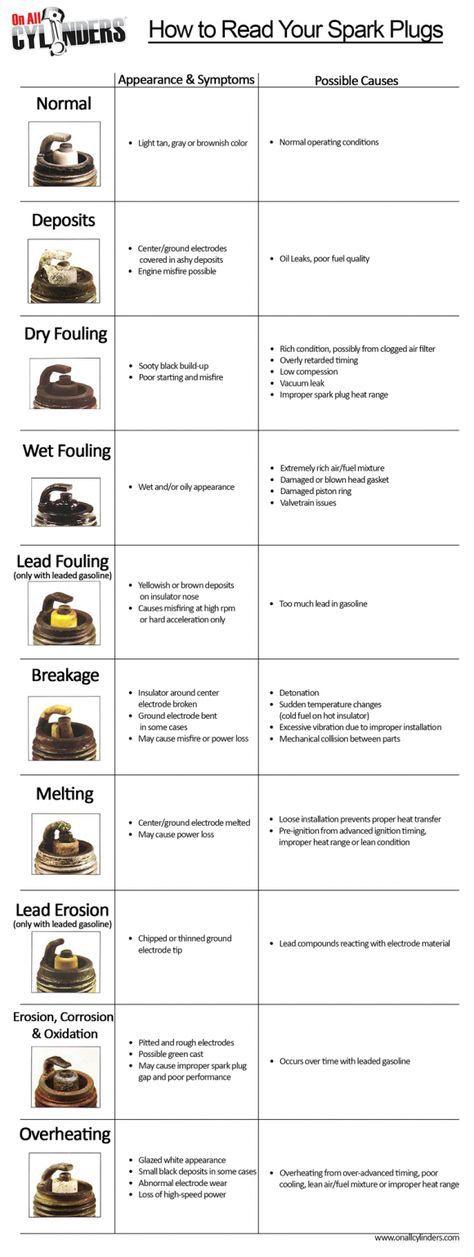 Over time they can wear out, become corroded, or become very dirty.
Over time they can wear out, become corroded, or become very dirty.
Spark plugs are fairly inexpensive and very easy to change. Here’s a table that shows when top ATV brands recommended changing the sparkplugs:
| ATV Model | When to Inspect/Change |
|---|---|
| 2020 Honda – Rancher | 600 miles (1000 kms), 6 months, or 100 hours. |
| 2020 Polaris – Sportsman 450 | 600 miles (1000 kms), 6 months, or 100 hours. |
| 2020 Yamaha Kodiak 700 | 600 miles (1000 kms), 6 months, or 100 hours. |
The 2020 Yamaha Kodiak 700 is a bit different because in the user manual it says to check the spark plugs after the first month when you get it and after the first 3 months. Then periodically every 6 months similar to the other popular ATV brands.
This also shows that the exact time requirements for when spark plugs will wear out, and when to change them differs by make and model. In the first instance, you should always refer to your owner’s manual to see exactly when you should change/inspect them.
In the first instance, you should always refer to your owner’s manual to see exactly when you should change/inspect them.
The owner’s manuals will also state what size, and what type of spark plug to use as a replacement.
For each timeframe, they also give mileage and the time it has been operating in hours. The reason is that if you ride your ATV a lot then it will create more wear and tear on the spark plugs. And you should check them sooner. Certain ATVs have both an odometer and a meter that displays how many hours it has been used.
But, the engine can be idle and still running without putting on any miles or kilometers so the operating hours are also used as a gauge of wear and tear.
Now that you’re aware of when to change your ATV spark plugs, how do you know if they’re worn, and whether they need replacing.
An oil change, which includes changing the oil filter, needs to be done periodically. Many people wonder how often you need to change the oil and the oil filter on their ATV.
I explained this in another article by looking at how often it needs to be done for the most popular ATV brands to answer this question. As well as explain what’s involved in this article here about how often you need to change the oil on ATV.
Although the owner’s manual of popular ATVs recommends inspecting the spark plug and replacing it every 6 months, you may be wondering how to know if a spark plug on your ATV is bad. Here’s how to know:
Signs that your spark plug is bad are if your ATV is harder to start, the acceleration isn’t as good as it normally is, it’s consuming more fuel than normal, if the engine backfires, or if you notice it isn’t idling smoothly once warmed up.
These signs can be indicative of other issues. But, generally, they are clear signs there is an issue with one or more of your spark plugs. The spark plugs themselves can also be checked individually to see if they spark. Here’s a quick video that shows how it’s done.
Here’s a quick video that shows how it’s done.
It’s fairly easy to check if you’re getting a spark from a spark plug using the test above. But, what are the effects of a bad spark plug? And what does it do to a four-wheeler/ATV?
A bad spark plug will cause the engine to misfire, backfire, use more fuel, and not accelerate with the same power it normally does. The spark plug is responsible for igniting the fuel which turns the pistons. When it’s not creating a spark the fuel won’t ignite efficiently or smoothly.
A spark plug works by drawing electricity from the battery to create the spark which lights the fuel. If the spark plug is not working correctly it won’t spark consistently.
This can lead to fuel not being burned completely, which means the engine needs to use more oil. If you’re idling your ATV, and the engine is fully warmed up, the engine should run constantly and smoothly.
If the spark plugs are misfiring then the engine won’t vibrate consistently and you’ll notice it sputters.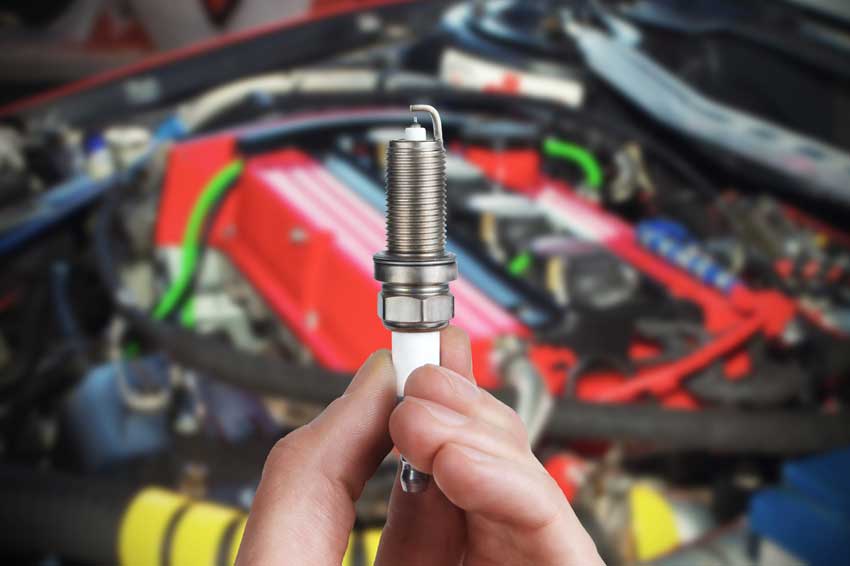 Due to some of the fuel not being used, there can be a build-up that will cause a loud backfire.
Due to some of the fuel not being used, there can be a build-up that will cause a loud backfire.
At first glance it seems that ATV spark plugs are small parts. But they are responsible for igniting the fuel mixture and starting the ATV. In addition, the candle is a kind of "indicator" of the health of the equipment, and can inform the rider about a number of malfunctions. Therefore, it is important for the driver to know when, after buying an ATV, to change this component and how to do it correctly.
The spark plug is basically a consumable item. The technical documentation for the device indicates the manufacturer's recommendations when to change this component. On average, the "life" of a candle is 6-8 thousand km. However, it all depends on the condition of the ignition element. The following can reduce the life of a component:
 If the compound is too lean or rich, the spark plug wears out faster.
If the compound is too lean or rich, the spark plug wears out faster. Damage to the element will cause a number of problems. For example, if the rider noticed that there was no spark on the ATV spark plug, it became difficult to start the engine, fuel consumption increased, or the engine started to work incorrectly, you need to change the spark plug. nine0003
It should be noted right away that the resource and operation of a spark plug directly depends on its quality. Therefore, drivers should only buy proven products from well-known brands. Agree, it is easier to buy a good component that will last 8 thousand km than to buy a new part every 1.5-2 thousand km.
Therefore, drivers should only buy proven products from well-known brands. Agree, it is easier to buy a good component that will last 8 thousand km than to buy a new part every 1.5-2 thousand km.
There are also a number of parameters to consider when choosing a new component for the ignition system. The key role is played by the dimensions of the candle itself (thread diameter and its length). You need to pay attention to the heat number. This is also an important parameter, ignoring which can lead to uncontrolled ignition of the fuel mixture upon contact with soot or hot engine elements. nine0003
To avoid problems, a special marking is applied to the plug, which indicates the permissible temperature of the component and its resistance to pre-ignition. This is a really important characteristic, because the piston is destroyed due to uncontrolled ignition.
Low spark plug temperature will also damage your ATV. If you buy a component with too high a heat number, carbon formation will increase and the engine will lose power.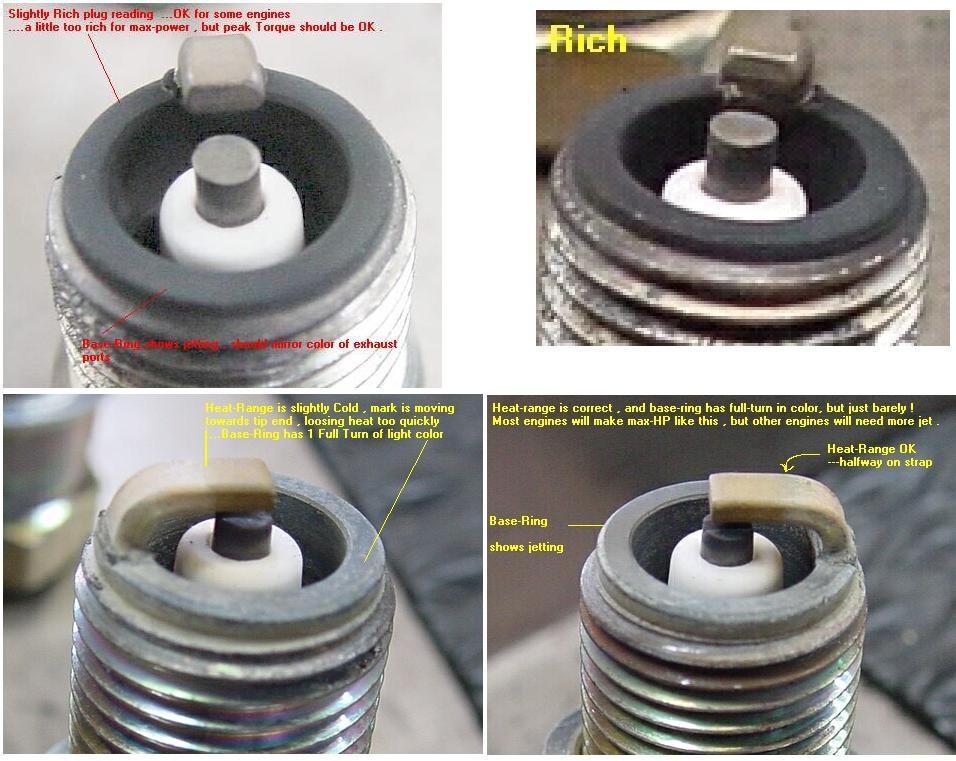
Most often, on the market you can find candles with glow number:
Before you buy a spark plug for a children's ATV or an adult ATV, always study the technical documentation. The instructions usually indicate the optimal parameters of all consumable components.
It is important to note that in order to change the spark plug, you will have to remove part of the ATV's bodywork. In almost all quadrics, the component is covered with plastic parts and even accessories (gas tank, etc. ).
).
After you have dismantled the body part, you need:
After this, inspect and clean the spark plug (if you intend to continue using it). Inspection of the component should not be ignored, as it will help to detect problems in the operation of the ATV.
By the type of spark plugs on the ATV, you can determine the serviceability of the equipment. For example, if:
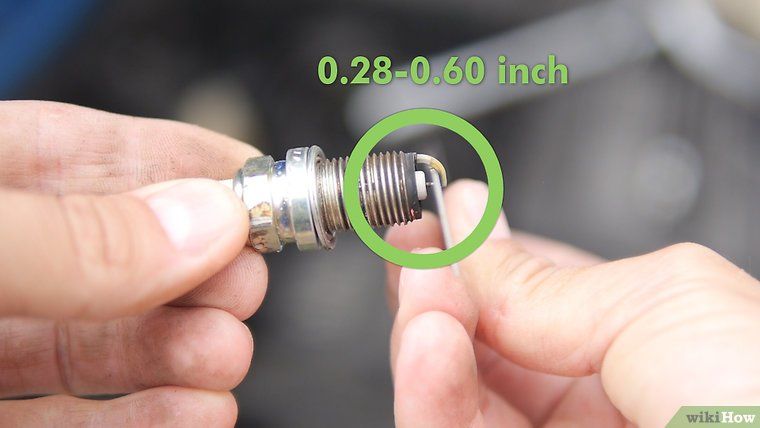
And these are only the most common "diseases" that can be diagnosed with a spark plug.
02/19/2021 2105
Efim Rozkin
What could be easier than replacing spark plugs in a car? Nothing, the experienced driver will answer. He unscrewed the old candles, screwed in new ones - and that's all business. However, in practice, when replacing candles, motorists make very stupid mistakes that can lead to engine problems and costly repairs.
For example, it is highly undesirable to change spark plugs when the engine is hot. Ignoring ordinary processes of physics and excessive use of force can lead to stripping of threads in wells. On a hot motor, when the metal is more susceptible to deformation, the thread can be damaged, as they say, at a time. nine0003
If there are more than eight valves in a car's engine, then, as a rule, the candles in it are immersed in deep wells, in which, of course, dust and dirt can accumulate. If the contamination is not removed before the candles are turned out, everything that has accumulated in the wells over the year will certainly fall into the cylinders. The engine will grind small debris and spit it out. And if larger and harder particles come across among it, then this is fraught with scuffing on the cylinder walls. Therefore, every time before the procedure for replacing spark plugs, it is necessary to blow the wells with compressed air. Cleanliness, as they say, is the guarantee of health. And this applies not only to people, but also to machines. nine0003
And this applies not only to people, but also to machines. nine0003
Photo: isfix.ru
And regardless of whether your car has an eight or 16-valve engine, before screwing in new candles, it is necessary to clean the thread of the candle well from oil and other contaminants. Because their presence can lead to improper tightening of the candle.
Another mistake - most drivers, when servicing their cars, for some reason are embarrassed to use torque wrenches in their work. And this is also a serious mistake. Twisting a candle, as they say, by eye, you risk applying excessive force to it. Meanwhile, for each type of candles there are recommendations, which, as a rule, the manufacturer indicates on the packaging of the spare part. Moreover, it is impossible to apply the same force to parts that have already served for some time as to new ones. The thing is that each spark plug is equipped with a multi-layer heat-removing washer. If it is not clamped correctly, then thermoregulation will be disturbed, and soon it will fail.